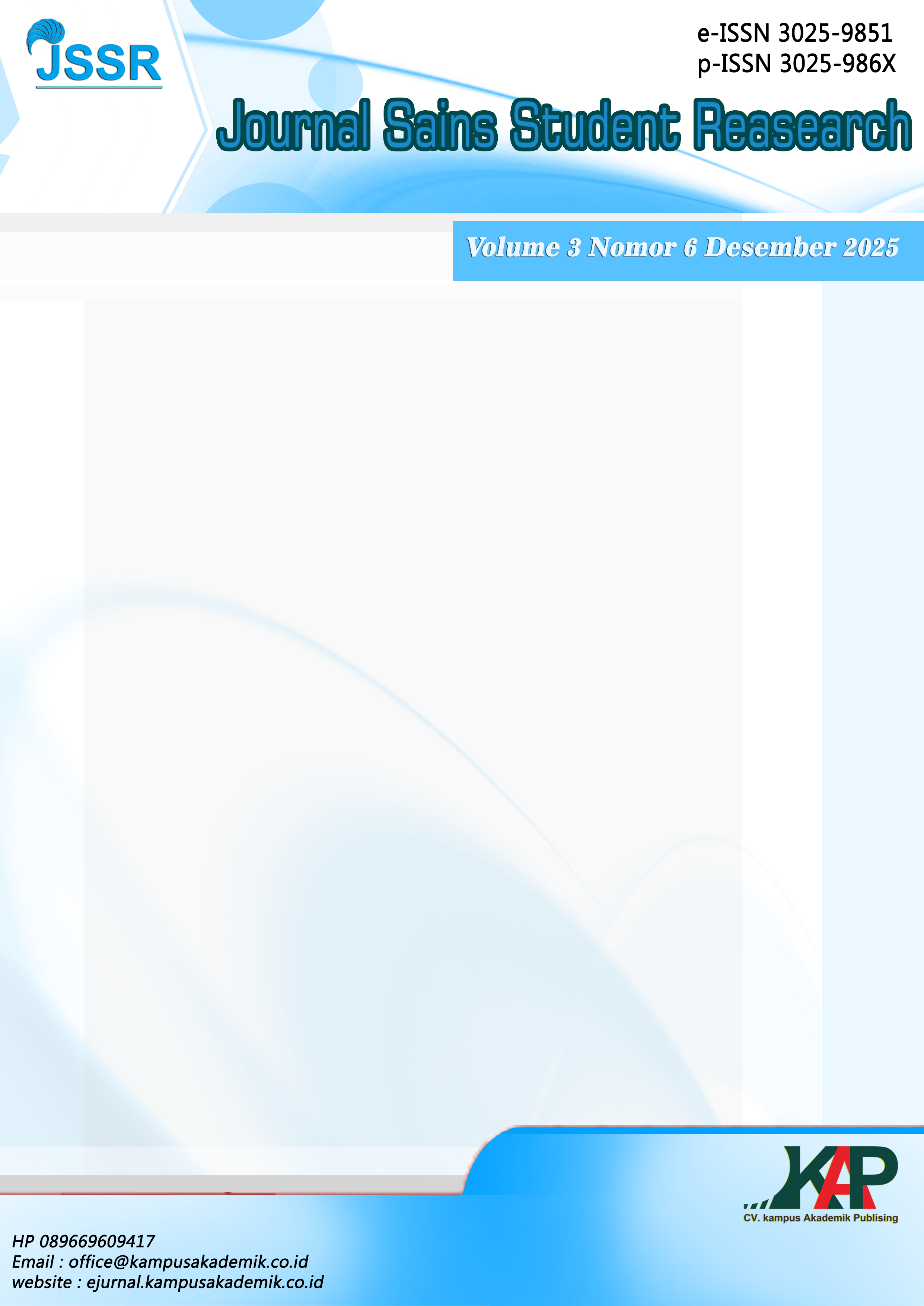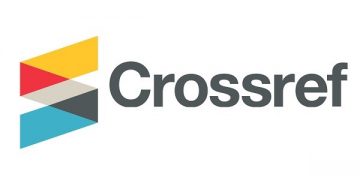Optimization Of Carboxymethyl Cellulose (CMC) Synthesis In Production Of Hydrogel From Ananas comosus L. Leaves
DOI:
https://doi.org/10.61722/jssr.v3i6.6479Keywords:
Synthesis, Pineapple leaf, carboxymethyl cellulose, hydrogelAbstract
Cellulose and its derivatives are important industrial raw materials because of their abundance, biodegradable properties, environmentally friendly, and have good mechanical and thermal properties. This study aims to determine the synthesis process and characteristics of carboxymethyl cellulose (CMC) in the manufacture of hydrogels from pineapple leaf waste. The stages of the CMC synthesis process from pineapple leaves are carried out through the process of delignification, bleaching, alkalization and carboxymethylation. Cellulose modification was done by alkalization method using 30% NaOH and variation of temperature and time on carboxymethylation with monocloroacetic acid (MCA) in 2-propanol solvent. In the manufacture of CMC hydrogel was made by using calcium chloride (CaCl2) as a crosslink agent. The results showed that CMC from pineapple leaf waste had good quality with pH 6,0-7,5 and degree of substitution values ranging from 0,4-1,2. Carboxymethyl cellulose and hydrogel produced showed the presence of O-H, C-H and C=O functional groups. The presence of ATR-IR peak 1053-1104 cm⁻¹ in the bleached product confirmed the presence of β-(1,4)-glycosidic bond of pure cellulose, while the peak at 1500-1700 cm⁻¹ of the modified cellulose product confirmed the carbonyl group of carboxymethyl cellulose (CMC).
References
V. F. Lesmana and A. Hanifah, “Enhancing Food Security In West Java In The Context of Achieving Sustainable Development Goals,” Socius J. Penelit. Ilmu-Ilmu Sos., vol. 1, no. 9, 2024.
H. Ritonga, M. Nurdin, F. S. Rembon, and others, Hidrogel: Aplikasinya sebagai Soil Conditioner. Penerbit NEM, 2021.
N. Indriyani, R. Ratnawati, and D. H. Wardhani, “SINTESA DAN PEMANFATAAN HIDROGEL,” J. Inov. Tek. Kim., vol. 8, no. 4, pp. 245–254, 2023.
J. Zhang, A. Li, and A. Wang, “Study on superabsorbent composite. VI. Preparation, characterization and swelling behaviors of starch phosphate-graft-acrylamide/attapulgite superabsorbent composite,” Carbohydr. Polym., vol. 65, no. 2, pp. 150–158, 2006.
A. Sannino, C. Demitri, and M. Madaghiele, “Biodegradable cellulose-based hydrogels: design and applications,” Materials (Basel)., vol. 2, no. 2, pp. 353–373, 2009.
J. J. Parulian, “SINTESIS DAN KARAKTERISASI CARBOXYMETHYL CELLULOSE (CMC) DARI KULIT BUAH AREN (Arenga pinnata) SEBAGAI PENYERAP ION LOGAM TIMBAL (II),” Kimia, 2023.
A. Rachmawati, A. Suprabawati, M. Agma, and others, “PEMBUATAN DAN KARAKTERISASI Na-CMC (Natrium Karboksimetil Selulosa) DARI KULIT BUAH PISANG KAPAS (Musa acuminata Colla),” 2019.
W. Mandasari, B. Sitorus, and R. Rudiyansyah, “Adsorpsi Logam Cd Menggunakan $α$-Selulosa dari Kulit Buah Nanas,” J. Teknol. Lingkung. Lahan Basah, vol. 11, no. 2, pp. 509–517.
A. F. Aili Hamzah, M. H. Hamzah, H. Che Man, N. S. Jamali, S. I. Siajam, and M. H. Ismail, “Recent updates on the conversion of pineapple waste (Ananas comosus) to value-added products, future perspectives and challenges,” Agronomy, vol. 11, no. 11, p. 2221, 2021.
I. F. Amalia, A. Setiadi, and M. Handayani, “PENDAPATAN USAHATANI NANAS DI KECAMATAN BELIK KABUPATEN PEMALANG,” J. Litbang Provinsi Jawa Teng., vol. 21, no. 2, pp. 165–177, 2023.
M. Ri. Sehe, H. F. Sangian, and S. H. J. Tongkukut, “Studi Perbandingan Struktur Selulosa Dengan Pretreatment Larutan Ion Pada Kayu Cempaka (Elmerillia Ovalis),” J. MIPA, vol. 7, no. 1, pp. 1–4, 2018.
B. Triadmojo, D. T. Okaviyani, A. K. Nabila, and T. Kusumaningsih, “Potensi Penambahan Minyak Atsiri Jahe Merah Dalam Pembuatan Edible Film Pati Taro Terhadap Sifat Fisik danAktivitas Antioksidan,” in Proceedings National Conference PKM Center, 2021.
D. Safitri, E. A. Rahim, P. Prismawiryanti, and R. Sikanna, “Sintesis karboksimetil selulosa (CMC) dari selulosa kulit durian (Durio zibethinus),” KOVALEN J. Ris. Kim., vol. 3, no. 1, pp. 58–68, 2017.
R. L. Permadani and S. Silvia, “Sintesis bioplastik dari selulosa asetat tandan kosong kelapa sawit: sebuah kajian,” J. Integr. Proses, vol. 11, no. 2, pp. 47–58, 2022.
N. F.-Z. Tuan Mohamood, A. H. Abdul Halim, and N. Zainuddin, “Carboxymethyl cellulose hydrogel from biomass waste of oil palm empty fruit bunch using calcium chloride as crosslinking agent,” Polymers (Basel)., vol. 13, no. 23, p. 4056, 2021.
R. Hariani and F. Fatmayati, “Pembuatan Carboxymethyl Cellulose (CMC) Dari Batang Kelapa Sawit,” J. Tek. Ind. Terintegrasi, vol. 7, no. 1, pp. 498–508, 2024.
S. Ayuningtiyas, F. D. Desiyana, and M. Z. Siswarni, “Pembuatan karboksimetil selulosa dari kulit pisang kepok dengan variasi konsentrasi natrium hidroksida, natrium monokloroasetat, temperatur dan waktu reaksi,” J. Tek. Kim. USU, vol. 6, no. 3, pp. 47–51, 2017.
Downloads
Published
Issue
Section
License
Copyright (c) 2025 JOURNAL SAINS STUDENT RESEARCH

This work is licensed under a Creative Commons Attribution-ShareAlike 4.0 International License.













